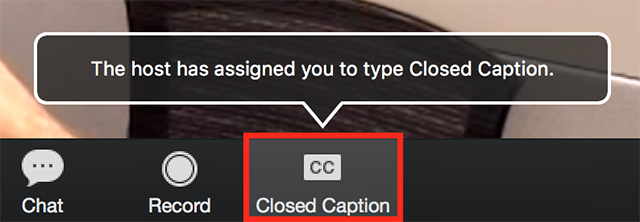
- What is closed captioning vs subtitles full#
- What is closed captioning vs subtitles software#
- What is closed captioning vs subtitles tv#
The editorial guidelines in the Presentation section are written in plain English, requiring only general familiarity with subtitles. In addition, if you have an interest in accessibility you will find a lot of useful information here.
anyone involved in controlling subtitle quality and compliance. What is closed captioning vs subtitles software#
developers of software tools for authoring, validating, converting and presenting subtitles.authors of subtitle (respeakers, stenographers, editors).This document brings together documents previously published by Ofcom and the BBC and is intended to serve as the basis for all subtitle work across the BBC: prepared and live, online and broadcast, internal and supplied.Īnyone providing or handling subtitles for the BBC: The Subtitle Guidelines describe best practice for authoring subtitles and provide instructions for making subtitle files for the BBC.
What is closed captioning vs subtitles full#
For a full description of the delivery requirements, see the File format section. In general, the BBC accepts EBU-TT part 1 with STL embedded for broadcast, and EBU-TT-D for online only content. There are many formats in circulation for subtitle files. Typically delivered as a separate file, closed subtitles can be switched off by the user and are not 'burnt in' to the image.

This document describes 'closed' subtitles only, also known as 'closed captions'.

The majority of these viewers are not hard of hearing. Subtitles are primarily intended to serve viewers with loss of hearing, but they are used by a wide range of people: around 10% of broadcast viewers use subtitles regularly, increasing to 35% for some online content. If you are new to subtitling, please start there.
The BBC Academy has produced an online guide to subtitling. This will give you a greater flexibility to make sure that it’s as clear as possible. Open captions also give the publisher to have the option of choosing the exact size and style of the captions. So because open captions are “burnt” directly onto the video, these decoders and such technologies are not required. This eliminates any inconsistencies that may occur from using multiple different devices. It also means that you don’t have have to deal with the headache of having a separate video file and caption file, which can be beneficial who those deals with these files often.Īnother advantage of open captions is that they are also more universal as closed captions require a special device called decoders to make it work. With open captions, it is always “switched on” so it removes that hurdle for many people. This could be because of reasons such as fiddly technology making it hard to switch it on or those with diseases such as arthritis find it difficult to press buttons. Some viewers might find that it’s difficult to turn on captions. Related Article: Top 15 Benefits of Subtitles/Captions & Transcriptions Good quality captions will also include sound effects and music too, which helps to create that added experience when watching videos. They are displayed simultaneously with the video image so that viewers can access the visual element of the video and use the captions instead of relying solely on the video’s sound.Īlthough many people would assume that it’s primarily for the deaf and hard of hearing to enjoy videos, there are many benefits of captions which many people don’t think about including assisting those with learning disabilities, access videos in noisy environments and better understand the jargon used. You can watch the video below, or scroll down further to read more about these two captions:Ĭaptions are on-screen text description that displays a particular video’s dialogue, identify speakers and describe other relevant sounds. 
 Closed captions can be turned on and offīut let’s not stop there, as it’s not that straightforward as you might think. Open captions are “burnt” onto the video and they can’t be turned off. Captions are the on-screen text descriptions. The main differences lies in how the captions are associated with the video of choice. Let’s get into details about the differences between open captions vs closed captions and when to use them both. However, it’s not very clear on what are the differences between the two and when to use them respectively.
Closed captions can be turned on and offīut let’s not stop there, as it’s not that straightforward as you might think. Open captions are “burnt” onto the video and they can’t be turned off. Captions are the on-screen text descriptions. The main differences lies in how the captions are associated with the video of choice. Let’s get into details about the differences between open captions vs closed captions and when to use them both. However, it’s not very clear on what are the differences between the two and when to use them respectively. What is closed captioning vs subtitles tv#
Online videos, films, TV programmes, video games…captions are gradually becoming a norm and many of us are expecting to have the option to check whether it’s available and to switch it on (whether it’s available or not is another debate).īut one thing that many of us have noticed is that there are 2 types of captions: open and closed captions. There is a very good chance that you’ve seen it on many differences places.








 0 kommentar(er)
0 kommentar(er)
